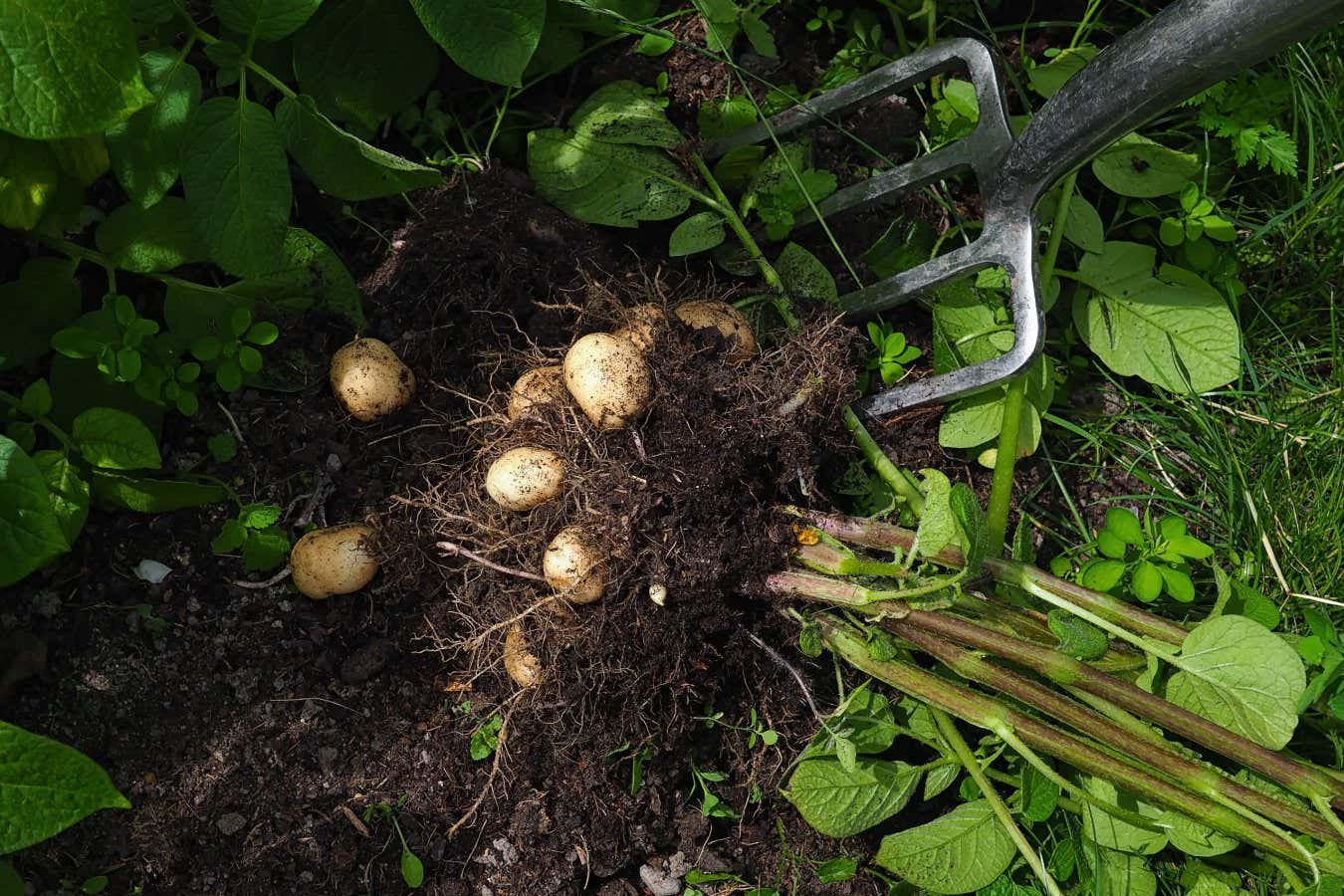Now Reading: Genetic Study Unravels the Potato’s Ancient Origins
-
01
Genetic Study Unravels the Potato’s Ancient Origins
Genetic Study Unravels the Potato’s Ancient Origins

Rapid Summary:
- A genetic study has revealed that the potato originated from a hybridisation event between an ancient tomato ancestor and an obscure south American plant lineage named Etuberosum around 8 million years ago in what is now Chile.
- This genetic reshuffling led to the formation of tubers, enabling potatoes to adapt to cold and dry conditions in the Andes mountains.
- Researchers examined 450 cultivated potato genomes and 56 wild species, finding consistent mixes of genes from tomatoes and Etuberosum.
- Hybridisation is highlighted as a meaningful evolutionary force contributing to diversity by researchers like Sandra knapp at London’s Natural History Museum.
- The discovery underscores the importance of protecting wild relatives of crops like potatoes amid threats such as habitat destruction and climate change.
Indian Opinion Analysis:
This research sheds light on how hybridisation drives genetic innovations essential for agricultural staples. For India, one of the world’s largest producers and consumers of potatoes, understanding this lineage emphasizes both ancient ingenuity in crop progress and future-focused strategies for safeguarding biodiversity. Protection of wild crop relatives could become vital for ensuring food security against climate change impacts. Additionally, these insights may guide improved cultivation techniques or foster innovations in developing hardier crop varieties better suited to diverse ecosystems across India.

























